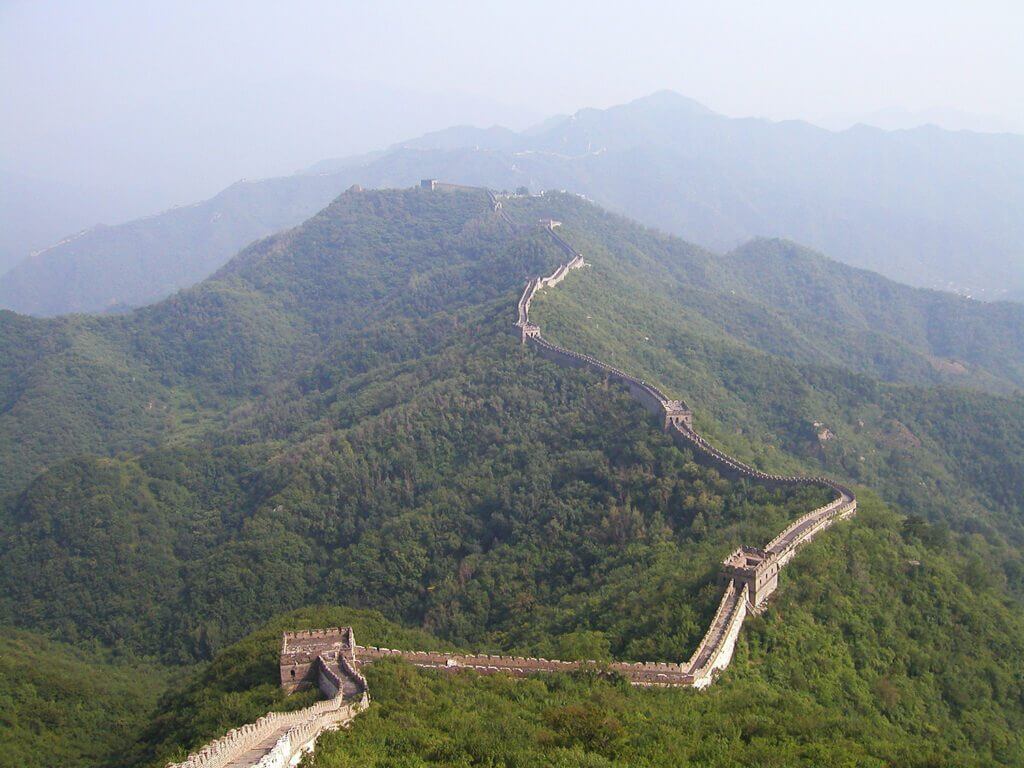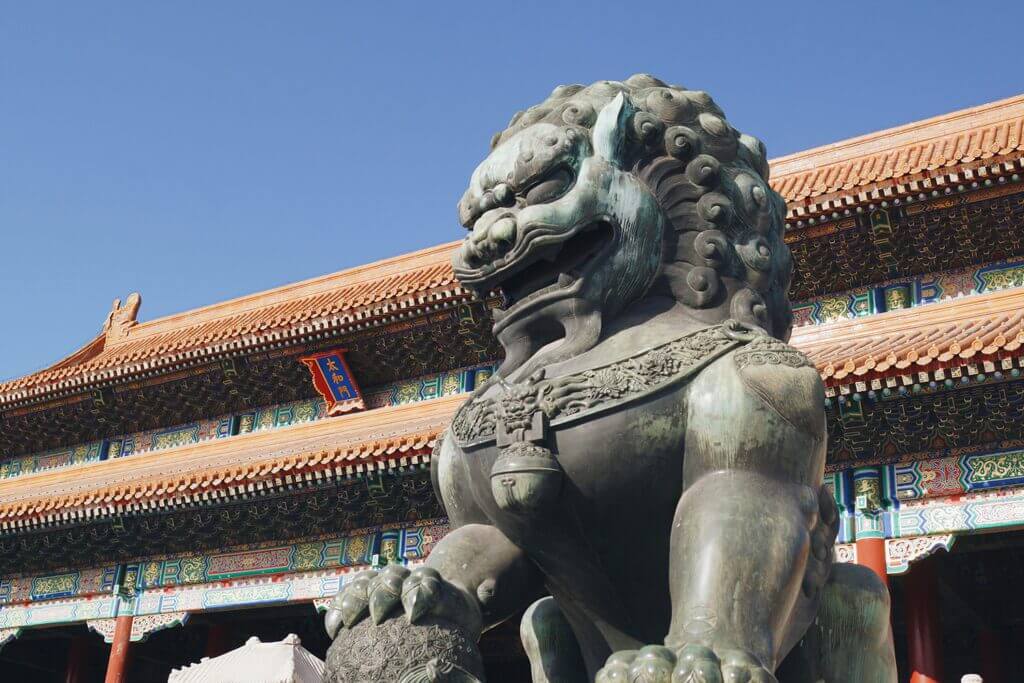During the recent UN Climate Change Conference in Glasgow (October-November 2021), China declared that it wants to achieve carbon neutrality by 2060. Although the commitment is strong, the deadline is distant.

At the same time, China is the first world emitter of greenhouse gases, the first emitter of carbon emissions, and nevertheless, the world champion of renewable energies. We are all concerned about this issue because there can be no effective fight against global warming without drastically reducing Chinese greenhouse gas emissions.
Historical considerations to understand China and climate change
Awareness of the climate issue is relatively recent. At first, denial prevailed. In the 1980s, in particular, Deng Xiaoping prioritised China’s economic catch-up, and growth of exports, even though these activities meant polluting. All of this, is in an attempt to renew with China’s past glory at the time when its dynasties dominated the world.

China then considers itself a developing country, which is thus not bound by the same binding climatic imperatives as the rich countries. At the end of the twentieth century, China signed the international climate agreements, but without taking any real measures on its territory.
As a result, Chinese energy consumption multiplied six times between 1980 and 2010; all based essentially on highly polluting fossil fuels. The turning point took place at the beginning of the 2000s. In 2002, China ratified the Kyoto protocol. Later, in 2007, it launched a green plan within the country.
In 2015, China declared war on pollution. The following year, China signed the COP 21 Paris Agreement. China wanted to appear as a green leader. However, the country’s large amounts of carbon emissions continue to pollute.
Some geographic considerations
To understand the relationship between China and climate change, it’s important to understand Geography. China sees itself as the geostrategic hub of the New World, Asia, and the Indo-Pacific region. Covering a space of just under ten million square kilometres, with 1.4 billion inhabitants (a quarter of the world’s population), China is increasingly confronted with environmental problems, including global warming and pollution.
China is, therefore, well placed to observe the effects of global warming. For example, the rise in water levels in the islets of the China Sea that it invests for military purposes, and drought in the interior of the country, with chain effects on hydroelectric production.
Beyond climate issues, environmental issues are taking up more and more space in public debate. Deforestation has long been a massive issue that is now very apparent in the country. Then, above all, the issue of air pollution has become a major public health issue. It causes approximately one million deaths a year in China, as well as cancers, cardiovascular diseases, and school closures, especially in Beijing.
Economic considerations to understand China and climate change
This is the central parameter. Any decision by Chinese power regarding the climate issue is linked to the economy. Although China wants to take action and become a leader in renewable energies and electric growth, the country has not proactively done much as the country has prioritised economic growth.

Despite global warming warnings, the Chinese government favours internal consumption and exports. For example, the boom in the car fleet and the development of the great strategy of the new silk roads, even if it means financing polluting projects abroad, and above all, the proliferation of coal-fired power stations. Coal still accounts for nearly 70% of China’s energy mix today, and many coal-fired power plants are still under construction until at least 2050. This means that CO2 emissions will continue to increase.
However, China has now become the world’s largest investor in renewable energy, with renewables representing 15% of energy consumption. The country is also the world’s largest producer of solar and wind energy, having started from scratch 15 years ago. It has been a colossal and ultra-fast effort; solar energy production multiplied by 150, and wind energy multiplied by 6 in the big cities. In addition, China has become the world leader in electric batteries for cars and is also developing nuclear power; it is now the world’s third-largest nuclear park.
But, of course, let’s bring it back to Chinese gigantism. Yes, in absolute value, China is the world leader in renewable energies, photovoltaics, and wind power. In relative value, compared to the population, it is no longer the world leader. Above all, the international community has understood the fight against global warming and perceived it first as an opportunity for growth and job creation. It all comes down to economics.
International commitments
Law, on the other hand, is not the central issue since, on paper, China has ratified the major international agreements. As a developing country, the 1997 Kyoto Protocol did not initially affect China. But it joined the process in 2002 and then signed the Paris Agreements at the same time as the United States.
During the recent COP26 in Glasgow, China again signed the joint initiative with Washington. In fact, far from paper, the implementation is slow to follow with no strict commitment on coal, no real incentive mechanisms on the internal market, or the purchase of carbon emission quotas.
There is, therefore, a real discrepancy between words and deeds. That said, China is not alone in this case.
Societal and governmental considerations
China and climate change: a bit of psychology
This is an essential dimension for understanding the evolution of the Chinese position towards a stronger climate commitment. Let’s first look at the psychology of the Chinese president. Xi Jinping sees the fight against global warming as an opportunity to acquire a powerful and virtuous image internationally.
Appearing as a world leader in renewable energies is an advantage. A strong asset in terms of ”soft power” is also a commercial asset. Like in the United States, Joe Biden, unlike his predecessor Donald Trump, is also eager to be proactive on this subject and develop renewable energies, China is reacting in a kind of race with Washington to appear as green as possible.
In this light, we must understand the recent Chinese announcement to no longer finance two coal-fired power stations abroad. In the psychology of the Chinese president, there is almost always a permanent quest for power. Almost a dream, in this case, of controlling the climate and nature. A very revealing example is cloud seeding, which is already in use in China. Cloud seeding is used to artificially trigger rain to fight against pollution and drought.
Pressure from the population
Nevertheless, and here we touch on sociology, the Chinese power must respond to the growing popular social pressure on environmental and ecological issues. Environmental concern has become a major issue due to atmospheric pollution as well as water and soil pollution. Popular discontent is growing. Complaints at the local level against public authorities are increasing. The population may have a great impact on how China deals with climate change.

In a survey published in 2017, 80% of Chinese people said they were worried about the climate issue. Young people, of course, are the most concerned. The whole question now is whether the new face displayed by Chinese power on this climate issue is the reflection or not of a sincere conviction.
It is well understood that economic growth first dictates decisions. The quest for power is decisive in this desire to appear as a green and ecological giant. There is, therefore, always a gap between words and deeds, with carbon emissions still remaining extremely high.


